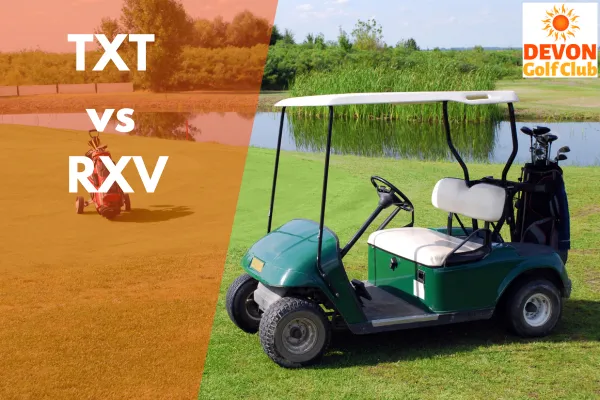Rev Up Your Golf Cart: Speed Sensor Troubleshooting Tips!
Are you finding that your golf cart is not performing as it should? Perhaps it’s moving too slowly or stuttering while you drive. If this is the case, it’s likely that your speed sensor is causing the issue.
- Rev Up Your Golf Cart: Speed Sensor Troubleshooting Tips!
- Key Takeaways
- Types of Speed Sensors
- Troubleshooting Yamaha Carts
- Troubleshooting Club Car & EZGO Carts
- Frequently Asked Questions
- How do you determine if a speed sensor is the root cause of slow or erratic movement in a golf cart?
- Can a speed sensor malfunction cause the golf cart to go into limp mode?
- Is it possible for a golf cart to have more than one speed sensor?
- Are there any common battery maintenance tips that can prevent speed sensor issues in Yamaha golf carts?
- How can you tell if a solenoid is engaging properly in a Club Car golf cart?
Don’t worry, though – troubleshooting your speed sensor is easier than you might think! In this article, we’ll provide you with simple and straightforward tips for troubleshooting speed sensors on EZGO, Club Car, and Yamaha golf carts.
Whether you’re a seasoned golf cart owner or new to the game, rev up your golf cart with these speed sensor troubleshooting tips! By following our step-by-step guide, you’ll be able to identify the issue with your speed sensor and get your golf cart back up to full speed in no time.
So, let’s get started!
Key Takeaways
– Speed sensors interpret motor rpm and are used for controlling motor functions such as regenerative braking and roll away protection.
– There are three types of speed sensors: electrical, magnetic, and mechanical, and their location varies by make and model of golf cart.
– Symptoms of a bad speed sensor include slow or erratic movement, stuttering, and limp mode, and testing methods include activating Row/Tow switch and checking three-pin plug connection.
– Troubleshooting involves checking wire connections and using a voltmeter to test the speed controller, and replacement involves removing the ring holding the sensor and placing a new one while in tow mode.
Types of Speed Sensors
Now let’s talk about the three types of speed sensors that you may encounter in your golf cart: electrical, magnetic, and mechanical.
Electrical speed sensors use electric signals to detect rotation and are commonly found in newer models.
Magnetic speed sensors use magnets to detect movement and are often used in older golf carts.
Mechanical speed sensors use a gear system to detect speed and are the least common type.
Each type of speed sensor has its own advantages and disadvantages, but they all serve the same purpose of interpreting motor rpm and passing information to the speed controller. Knowing the type of speed sensor in your golf cart can help with troubleshooting and maintenance.
If you’re unsure of the type of speed sensor in your golf cart, consult your owner’s manual or a professional technician.
Troubleshooting Yamaha Carts
To troubleshoot Yamaha carts, you should check the controller and motor for loose wires and black marks. This will ensure that the golf cart is running smoothly and will help to identify any potential issues before they become bigger problems.
Additionally, it’s important to maintain the acid-based rechargeable batteries by checking the water level and cleaning the terminals with baking soda and water. This will help to prolong the life of the batteries and ensure that they’re functioning properly.
If you hear a clicking sound, this could indicate solenoid engagement, while a Morse code flashing light on the controller could indicate a problem. Another potential issue is a broken magnet causing malfunction of the speed sensor. Make sure to also check that the screws holding the plate in place are intact.
By following these troubleshooting tips, you can keep your Yamaha golf cart in top condition and enjoy a smooth ride on the green.
Troubleshooting Club Car & EZGO Carts
If you’re experiencing issues with your Club Car or EZGO golf cart, start by checking the batteries for charge and solenoid engagement. Make sure that the batteries are fully charged and the solenoid is properly engaging.
If the batteries are weak or the solenoid is not working correctly, it can cause the golf cart to move slowly or not at all.
Next, inspect the controller and wiring for any damage or disconnection. Look for any frayed wires, loose connections, or damaged components. If you find any issues, replace or repair them as necessary.
Checking the controller and wiring is important because it controls the speed and movement of the golf cart.
By following these simple troubleshooting tips, you can get your Club Car or EZGO golf cart running smoothly again.
Frequently Asked Questions
How do you determine if a speed sensor is the root cause of slow or erratic movement in a golf cart?
To determine if a bad speed sensor is causing slow or erratic movement in your golf cart, you can try a push test. Push the cart and see if it moves smoothly. If not, the sensor may be to blame.
Can a speed sensor malfunction cause the golf cart to go into limp mode?
Yes, a bad speed sensor can cause your golf cart to go into limp mode. This happens when the sensor sends incorrect or no information to the speed controller, which limits the motor’s power output. Troubleshoot the sensor to fix the issue.
Is it possible for a golf cart to have more than one speed sensor?
Yes, it is possible for a golf cart to have more than one speed sensor. However, the number and location of the sensors depend on the cart’s make and model. The symptoms of a bad speed sensor include slow or erratic movement and limp mode.
Are there any common battery maintenance tips that can prevent speed sensor issues in Yamaha golf carts?
To prevent speed sensor issues in your Yamaha golf cart, make sure to regularly maintain your acid-based rechargeable batteries. Keep the battery terminals clean and check water levels and distilled water on battery plates.
How can you tell if a solenoid is engaging properly in a Club Car golf cart?
To check if a solenoid is engaging properly in your Club Car golf cart, listen for a clicking sound. If you don’t hear it, it may be faulty. Inspect the wiring and batteries for any damage or disconnection.



